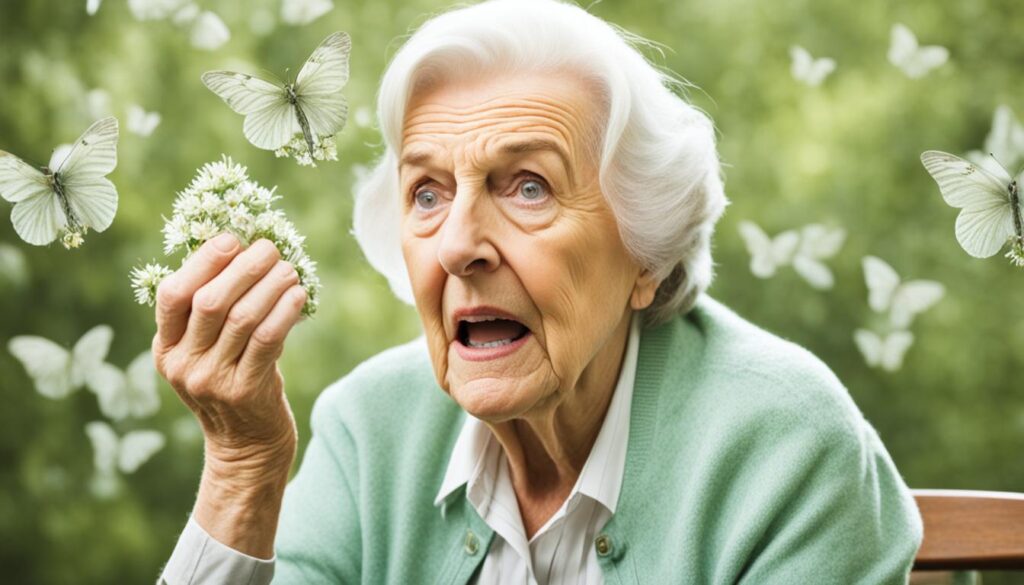Understanding Ageism: Impact & Solutions

Have you ever felt excluded or underestimated because of your age? I certainly have. The impact of ageism can be profound, affecting individuals of all ages and perpetuating stereotypes that limit opportunities and hinder personal growth. It’s a matter that deserves our attention and action.
Ageism encompasses the stereotypes, prejudice, and discrimination based on age. Whether you’re a young professional facing assumptions of inexperience or a seasoned individual dismissed as being out of touch, ageism can impact your well-being, career prospects, and overall quality of life.
In this article, we will delve into the scope of ageism and explore potential solutions to combat age discrimination. Together, let’s challenge the biases, misconceptions, and inequalities surrounding age, and work towards fostering a society that values and respects individuals across all stages of life.
Key Takeaways:
- Ageism is a pervasive issue that affects individuals of all ages.
- Ageism perpetuates stereotypes and discrimination based on age.
- Ageism has a significant impact on well-being, career prospects, and overall quality of life.
- We will explore the scope of ageism and discuss potential solutions to combat age discrimination.
- Together, we can challenge biases and work towards fostering a society that values and respects individuals of all ages.
Defining Ageism and Its Scope
Ageism is a prevalent issue that affects individuals of all ages, encompassing stereotypes, prejudice, and discrimination based on age. It is not limited to a specific age group, impacting both older individuals and younger people.
Ageism can be observed in various aspects of life, permeating institutions, relationships, and even self-perception. It manifests in societal norms, attitudes, and behaviors that perpetuate inequalities and hinder individuals from accessing opportunities and resources.
To gain a comprehensive understanding of ageism, it is crucial to define its scope. Ageism encompasses both overt and subtle biases, ranging from casual remarks and exclusion to systemic discrimination. It thrives on assumptions and generalizations about certain age groups, leading to stereotyping and prejudice.
The image above represents the interconnectedness and reach of ageism in society. It illustrates how ageism affects multiple domains, including employment, healthcare, media, and social interactions.
By acknowledging the breadth of ageism’s impact, we can begin to dismantle harmful stereotypes and promote age equality. This section will delve further into the definition of ageism and explore its scope in various aspects of our lives.
Ageism Affects Everyone: From Young to Old
Ageism is a social issue that impacts individuals of all ages. It goes beyond discrimination against older adults and includes stereotypes and biases towards younger individuals as well. By understanding the stereotypes associated with different age groups and recognizing the effects of self-directed ageism, we can work towards a more inclusive society.
The Stereotyping of Youth and the Elderly
Stereotypes surrounding youth and the elderly contribute to ageism and perpetuate negative attitudes. Younger individuals are often labeled as inexperienced, lazy, or entitled, while older adults may face stereotypes of being frail, helpless, or lacking technological knowledge. These stereotypes can lead to unfair treatment, limited opportunities, and a disregard for the diverse abilities and contributions of individuals across all age groups.
Self-Directed Ageism: Internalizing Stereotypes
Self-directed ageism occurs when individuals internalize the stereotypes associated with their own age group and apply them to themselves. This can result in diminished self-worth, decreased confidence, and a reluctance to engage in activities that are perceived as “age-inappropriate.” Self-directed ageism not only affects individuals’ mental well-being but also perpetuates a cycle of discrimination by reinforcing societal stereotypes.
Understanding that ageism affects individuals of all ages is crucial for dismantling stereotypes and promoting age equality. By challenging negative stereotypes associated with different age groups and recognizing the effects of self-directed ageism, we can create a society that values and respects individuals based on their abilities, experiences, and contributions rather than their age.
The Prevalence of Ageism In Various Sectors
Ageism is not confined to one sector; it permeates various areas of society. This section examines the prevalence of ageism in healthcare, the workplace, and the media, shedding light on its impact on individuals.
Institutional Policies That Encourage Age Discrimination
Institutional policies in sectors such as healthcare and the workplace can inadvertently contribute to age discrimination. These policies might create barriers that limit opportunities for older individuals, perpetuating stereotypes and reinforcing ageist attitudes.
“Ageism in healthcare can manifest in policies that prioritize younger patients or limit access to certain treatments based on age. In the workplace, ageist policies can result in age bias during hiring processes or restrict opportunities for professional development.”
Challenging and addressing these institutional policies is crucial for creating inclusive environments that promote age equality and provide equal opportunities for individuals irrespective of their age.
Media Representation and Ageist Language
The media plays a powerful role in shaping societal attitudes towards age. Biased media representations and the use of ageist language can reinforce negative stereotypes, perpetuate ageism, and influence public perceptions.
It is essential for the media to be mindful of the language used when portraying individuals of different age groups and to challenge harmful stereotypes. By promoting accurate and diverse representations, the media can help combat ageism and foster a more inclusive society.
Prevalence of Ageism in Different Sectors
The table below provides an overview of the prevalence of ageism in various sectors, highlighting the specific challenges and issues faced by older individuals:
| Sector | Prevalence of Ageism |
|---|---|
| Healthcare | Under-treatment, age bias, limited access to care |
| Workplace | Age bias in hiring, discriminatory policies, limited professional development opportunities |
| Media | Stereotypical representations, ageist language, reinforcement of negative stereotypes |
Addressing ageism in these sectors requires awareness, education, and systemic changes to create more equitable and inclusive environments for people of all ages.
Unraveling the True Problem of Ageism
Ageism is a complex issue that permeates our society, impacting individuals of all ages. To effectively address ageism, it is essential to understand its root causes and the true problem it poses. Ageism originates from deeply ingrained societal attitudes and beliefs about age and aging.
These attitudes perpetuate discrimination, unequal treatment, and limited opportunities for individuals of all age groups. The true problem of ageism lies in these societal biases that hinder true equality and restrict the potential of individuals solely based on their age.
By unraveling the root causes of ageism, we can shed light on the pervasive nature of this issue and develop strategies to combat it effectively. Understanding the true problem of ageism is the first step towards fostering a more inclusive society that values individuals of all ages.
Interpersonal Ageism: Navigating Social Interactions

Ageism extends beyond institutional settings and seeps into interpersonal interactions, where individuals often experience discrimination or prejudice based on their age. These encounters can significantly impact relationships, social interactions, and overall well-being.
Interpersonal ageism can take various forms, such as dismissive attitudes, exclusionary behavior, or condescending remarks. These actions can make individuals feel undervalued, marginalized, or invisible, leading to deteriorating social connections and emotional distress.
Addressing interpersonal ageism requires empathy, open-mindedness, and a commitment to creating inclusive environments. Here are some strategies to navigate social interactions and challenge ageist attitudes:
- Develop awareness: Reflect on personal biases and prejudices related to age. Recognize that stereotypes and assumptions about age can influence how we interact with others.
- Practice active listening: Pay attention to the experiences and perspectives of individuals of different ages without judgment. Be present in conversations and show genuine interest in understanding their unique viewpoints.
- Challenge assumptions: Question age-related stereotypes and biases when they arise. Encourage positive discussions about age diversity and challenge negative language or behavior that perpetuates ageist beliefs.
- Foster intergenerational connections: Engage in activities that bring people of different ages together, fostering understanding and appreciation for each other. This can include volunteering, mentorship programs, or community initiatives.
- Advocate for inclusion: Support initiatives that promote age diversity and inclusivity in various spaces, such as workplaces, social groups, and community organizations. Encourage equal opportunities for individuals of all ages.
Navigating social interactions in the face of ageism can be challenging, but by adopting these strategies, individuals can contribute to a more inclusive and understanding society.
Internalized Ageism’s Impact on Self-Perception
Internalized ageism, the internalization of ageist beliefs, has profound effects on an individual’s self-perception and self-worth. When individuals internalize ageist stereotypes and discriminatory attitudes, it can lead to negative thoughts and feelings about themselves as they age. This internalized discrimination takes a toll on their mental health and overall well-being.
Recognizing and overcoming self-directed prejudices is crucial for promoting a positive self-perception and combating ageism. By challenging these internalized beliefs, individuals can reclaim their self-worth and embrace the aging process with confidence. Here are some strategies for overcoming self-directed ageism:
- Self-reflection: Take time to evaluate and challenge the ageist beliefs and stereotypes you may have internalized. Recognize that these beliefs are not based on objective truths and that everyone has value regardless of their age.
- Seek support: Engage in conversations with trusted friends, family members, or mental health professionals who can provide support and guidance in navigating self-directed ageism.
- Surround yourself with positive influences: Surround yourself with individuals who challenge ageist beliefs and support a positive view of aging. This can help counteract the negative impact of internalized ageism.
- Practice self-care: Engage in activities that promote self-care and self-acceptance. Focus on maintaining a healthy lifestyle, nurturing relationships, and pursuing hobbies and interests that bring joy and fulfillment.
Remember, age is just a number, and it does not define your worth or abilities. Embrace the wisdom and experiences that come with aging, and celebrate the unique qualities that make you who you are at any age.
Exploring Hostile and Benevolent Ageism
Ageism presents itself in various forms, including hostile ageism and benevolent ageism. Hostile ageism involves the expression of openly aggressive beliefs towards age, often portraying older adults as burdensome or incompetent. Conversely, benevolent ageism arises from patronizing attitudes, particularly towards specific age groups, such as treating older adults as helpless or infantilizing younger individuals.
The Underlying Aggressive Beliefs
In the context of ageism, hostile beliefs are characterized by negative stereotypes and discriminatory attitudes towards older adults. These aggressive beliefs may manifest as assumptions about declining cognitive abilities, physical limitations, or a lack of productivity. Such beliefs perpetuate ageist narratives and contribute to age discrimination in various areas of life, including healthcare, employment, and social interactions.
Patronizing Attitudes Towards Age Groups
In contrast to hostile ageism, benevolent ageism stems from patronizing attitudes towards different age groups. It often manifests as overly protective or infantilizing behavior towards older adults or condescending treatment towards younger individuals. These patronizing attitudes can undermine the autonomy, capabilities, and dignity of the people they are directed towards. Benevolent ageism may have well-intentioned origins, but it still reinforces stereotypes and limits the agency of those experiencing it.
It is essential to recognize that both hostile and benevolent ageism contribute to the marginalization and unequal treatment of individuals based on their age. By understanding the underlying beliefs and attitudes associated with these forms of ageism, we can work toward creating a more inclusive and equitable society that embraces people of all ages.
Explicit vs. Implicit Ageism and Its Examples
Ageism can manifest in two different forms: explicit ageism and implicit ageism. Explicit ageism involves conscious acts of discrimination or prejudice based on age, whereas implicit ageism refers to unconscious biases or stereotypes that individuals may hold.
To illustrate the different ways ageism can manifest in society, let’s explore some examples:
“You’re too old to pursue a new career.”
This statement exemplifies explicit ageism as it directly discriminates against an individual based on their age, implying that they are incapable of starting a new career due to being older. This kind of explicit ageism can limit opportunities and perpetuate stereotypes about older adults.
“She’s too young to hold such a high position.”
This comment demonstrates explicit ageism by dismissing the capabilities of a young person solely based on their age. By assuming that age determines competence, explicit ageism can hinder the professional growth and development of younger individuals.
On the other hand, implicit ageism operates at a subconscious level, often unnoticed by the individuals who hold such biases. It can manifest in subtle behaviors or attitudes that reflect age-based stereotypes or prejudices.
For example, assuming that an older person would struggle with technology or dismissing their ideas based on age-related assumptions are instances of implicit ageism. These biases are often unintentional but can still contribute to unequal treatment and reinforce stereotypes.
By recognizing both explicit and implicit ageism and understanding their impact, we can work towards challenging these biases, promoting age equality, and fostering a more inclusive society.
Ageism in the Workplace: A Closer Look
Ageism is a prevalent issue in the workplace that adversely affects individuals across different age groups. It manifests in various forms, including age bias in hiring and professional development, as well as discriminatory workplace policies. To combat ageism effectively, a closer examination of these issues is necessary.
Handling Age Bias in Hiring and Professional Development
Age bias in hiring can limit opportunities for both older and younger workers. Negative stereotypes and assumptions about certain age groups may influence employers’ decisions, leading to unfair treatment and missed talent. Similarly, age bias in professional development can hinder career advancement for individuals of all ages.
It is crucial for employers to implement strategies that promote diversity, equity, and inclusion in the workplace. This includes creating a fair and transparent hiring process that evaluates candidates based on skills, qualifications, and experience rather than age. Additionally, employers should provide equal opportunities for training, education, and advancement to all employees, regardless of their age.
Organizations can also benefit from intergenerational mentorship programs, where employees from different age groups can learn from each other’s experiences. This fosters collaboration, knowledge sharing, and a more inclusive work environment.
Tackling Discriminatory Workplace Policies
Discriminatory workplace policies can perpetuate age discrimination and create unequal work environments. These policies may include mandatory retirement ages, limited opportunities for career development, or inadequate accommodations for older workers. Such practices can negatively impact employee well-being, hinder productivity, and contribute to the loss of valuable talent.
To address discriminatory workplace policies, organizations should conduct regular reviews and updates of their policies to ensure they are fair and inclusive. They should also consider implementing flexible work arrangements, such as telecommuting or flexible schedules, to accommodate the diverse needs of employees of all ages.
Training programs on age diversity and inclusion can also be beneficial, raising awareness among employees and fostering a culture that values employees of all ages. By promoting age equality and creating an inclusive work environment, organizations can minimize age bias and maximize the potential of their workforce.
Ageism in the workplace is a complex issue that requires concerted efforts from both employers and employees to overcome. By addressing age bias in hiring and professional development, as well as tackling discriminatory workplace policies, organizations can create an inclusive and equitable work environment for individuals of all ages.
Personal Relationships and Ageist Dynamics
Ageism extends its influence beyond institutions and workplaces to personal relationships, where ageist dynamics can emerge, potentially straining interactions. Age-related stereotypes and beliefs can significantly impact the way individuals perceive and interact with their partners, family members, and friends.
These ageist dynamics can create barriers and misunderstandings that hinder the development of healthy and inclusive connections. It is essential to gain a deeper understanding of how ageism affects personal relationships in order to nurture stronger bonds and foster mutual respect.
One approach to managing ageist dynamics is by recognizing and challenging age-related biases and stereotypes within ourselves. Examining our attitudes and beliefs about age can help us identify potential biases and work towards dismantling them. This self-reflection allows for a more open and empathetic outlook, promoting stronger relationships based on understanding and acceptance.
Additionally, effective communication plays a vital role in navigating ageist dynamics. Openly discussing and addressing age-related concerns and misconceptions can help break down barriers and promote better understanding. Developing empathy and actively listening to one another’s perspectives can foster connection and bridge the gaps created by ageism.
“Age is not a determining factor of a person’s value or worth. By challenging ageist assumptions and fostering open and respectful communication, we can create healthier and more fulfilling personal relationships.”

Confronting Ageism in Healthcare Settings
Ageism in healthcare can have a profound impact on patient care and treatment. Biases and stereotypes about older patients can lead to undertreatment, discrimination, and inadequate healthcare services. Challenging inaccurate perceptions of aging in medicine is crucial for promoting equitable and quality healthcare for all ages.
The Impact of Ageism on Patient Care and Treatment
Ageism in healthcare settings can result in suboptimal care and treatment for older adults, affecting their overall health outcomes. Stereotypes that older patients are frail, less capable, or burdensome can lead to undertreatment or overlooking certain health issues.
Healthcare providers may also make assumptions about the patient’s quality of life or prioritize younger patients over older ones. Such biases can lead to a lack of appropriate interventions and an inadequate assessment of the patient’s needs and goals.
Additionally, ageism within healthcare systems can contribute to disparities in access to healthcare services, limiting older adults’ ability to receive necessary treatments, medications, or diagnostic procedures. This can negatively impact their health and well-being, leading to further complications.
Addressing ageism in healthcare is crucial for improving patient outcomes, reducing healthcare disparities, and promoting equal access to quality care for patients of all ages.
Challenging Inaccurate Perceptions of Aging in Medicine
To combat ageism in healthcare, it is essential to challenge inaccurate perceptions of aging within the medical field. This includes debunking stereotypes and promoting a more nuanced understanding of aging and its impact on health.
Healthcare providers should be educated about the diverse experiences and capabilities of older adults. By fostering empathy and understanding, clinicians can deliver patient-centered care that respects the individuality and unique needs of each patient.
Medical schools and healthcare organizations can implement training programs that address ageism and promote a comprehensive understanding of health issues across the lifespan. These programs can help healthcare professionals recognize their own age-related biases and develop strategies to provide equitable care to patients of all ages.
Additionally, promoting intergenerational collaboration and mentorship within healthcare settings can foster mutual respect and facilitate knowledge exchange between healthcare providers of different ages. This can contribute to a more supportive and inclusive healthcare environment.
By challenging inaccurate perceptions of aging in medicine, we can create healthcare systems that prioritize patient well-being, respect individual autonomy, and provide comprehensive care for patients at every stage of life.
For further reading on ageism in healthcare, you can refer to this study that offers valuable insights into the impact of ageism on patient care and provides strategies for addressing ageist biases in healthcare settings.
Ageism’s Economic Impact and Healthcare Spending
“Ageism has far-reaching implications, extending beyond societal attitudes and individual experiences. One significant aspect is its economic impact, particularly in relation to healthcare spending and financial consequences. Discrimination based on age can result in increased healthcare costs and create economic burdens for individuals and societies as a whole.”
Discrimination against individuals based on their age has real financial implications. The economic impact of ageism is a critical concern that necessitates attention and analysis. By examining the financial consequences of age discrimination, we can gain a better understanding of the true cost of ageism and its effects on various aspects of society.
One area where ageism directly influences economic outcomes is healthcare spending. Ageist attitudes and practices can lead to higher healthcare costs for individuals and healthcare systems. Older individuals may face barriers in accessing necessary medical treatments and preventative care, leading to higher healthcare utilization and expenditures.
Moreover, age discrimination in healthcare can lead to suboptimal patient care and treatment. When healthcare professionals harbor ageist biases, older patients may receive inadequate or inappropriate care, resulting in negative health outcomes and increased healthcare costs in the long run.
Additionally, ageism’s economic consequences extend beyond healthcare spending. Discrimination based on age can limit individuals’ employment opportunities, leading to reduced income potential and financial instability. Ageism in the workplace can result in fewer job offers, lower wages, and limited career advancement prospects for older individuals. These financial implications contribute to economic disparities and inequalities within society.
Furthermore, age discrimination can have broader economic repercussions for societies as a whole. By excluding or undervaluing older workers, economies miss out on the valuable knowledge, skills, and experience they bring to the workforce. This lost potential hinders productivity and economic growth.
To address the economic impact of ageism, it is crucial to challenge ageist attitudes, eliminate discriminatory practices, and promote age equality. Investing in age-diverse work environments, implementing inclusive hiring practices, and providing opportunities for lifelong learning and professional development are key strategies for reducing the economic burden of ageism.
| Financial Consequences of Age Discrimination | Impact |
|---|---|
| Inadequate healthcare for older individuals | Higher healthcare costs |
| Limited employment opportunities | Reduced income potential |
| Underutilization of older workers | Limited productivity and economic growth |
The economic impact of ageism and the associated healthcare spending are critical considerations in addressing age discrimination. By addressing ageism at both the individual and systemic levels, we can foster more inclusive, equitable, and economically sustainable societies.
Combatting Ageism through Education and Intergenerational Cooperation
Education and intergenerational cooperation play crucial roles in combatting ageism and promoting age equality. By fostering empathy, understanding, and respect across generations, we can bridge the gap between different age groups and create a more inclusive society.
Empathy-Building Educational Activities
One of the most effective ways to combat ageism is through empathy-building educational activities. These activities help individuals gain a deeper understanding of the impact of ageism and challenge stereotypes associated with different age groups.
There are various forms of empathy-building educational activities that can be implemented:
- Intergenerational storytelling workshops: These workshops bring different age groups together to share their life experiences and stories. This promotes empathy and understanding by allowing individuals to learn from one another’s perspectives.
- Workshops on aging and age-related issues: These educational sessions provide information and raise awareness about the challenges faced by different age groups. By encouraging open discussions and dispelling age-related myths, these workshops help combat ageism.
- Collaborative projects: Engaging in collaborative projects that involve individuals of different ages fosters teamwork, cooperation, and mutual respect. Through shared goals and joint efforts, stereotypes and biases can be challenged and dismantled.
Fostering Intergenerational Understanding and Respect
In addition to education, fostering intergenerational understanding and respect is essential in combatting ageism. By creating opportunities for intergenerational interactions and promoting positive relationships across age groups, we can break down barriers and build a more inclusive society.
Here are some strategies for fostering intergenerational understanding and respect:
- Intergenerational mentoring programs: Pairing younger individuals with older mentors and vice versa creates opportunities for learning and building relationships. This promotes mutual understanding and appreciation.
- Volunteering initiatives: Encouraging people of all ages to participate in community service and volunteer work fosters collaboration, empathy, and a sense of purpose. By working together towards common goals, intergenerational bonds are strengthened.
- Social events and activities: Organizing social events, such as intergenerational picnics or cultural celebrations, encourages interaction and the exchange of ideas and experiences. These events help break down stereotypes and build connections across generations.
By integrating education on ageism and fostering intergenerational cooperation, we can combat ageism and create a more inclusive society where people of all ages are valued and respected.
Legal and Policy Interventions: Key to Addressing Age Stereotypes
Addressing age stereotypes and promoting age equality requires the implementation of legal and policy interventions. These interventions play a crucial role in protecting individuals from age discrimination and creating a more inclusive society. By enacting laws and policies that explicitly prohibit age-based discrimination, we can work towards eliminating age stereotypes and fostering a society that values people of all ages.
Legal interventions for ageism involve the creation of legislation that prevents age discrimination in various domains, such as employment, healthcare, and public services. These laws aim to establish equal rights and opportunities for individuals of different ages, ensuring that age is not a barrier to accessing essential services or participating fully in society.
Policy interventions complement legal measures by setting guidelines and best practices for organizations and institutions. Policies can be implemented at the national, regional, or organizational levels to promote age-inclusive practices and challenge age stereotypes. Through targeted policies, governments and institutions can encourage diverse, age-friendly environments and actively combat ageism.
Key initiatives and regulations related to legal and policy interventions include:
- Age Discrimination in Employment Act (ADEA): This U.S. federal law prohibits age discrimination against employees who are 40 years of age and older. The ADEA protects individuals from discriminatory practices in hiring, promotion, termination, and other employment aspects.
- Age-friendly City Programs: These initiatives aim to create age-friendly environments that meet the needs of older adults by focusing on areas such as housing, transportation, and social participation.
- Elder Abuse Prevention Laws: These laws aim to protect older adults from abuse, neglect, and exploitation by providing legal provisions for reporting, investigating, and addressing cases of elder abuse.
- Age Equality Strategies: Some countries have developed national strategies or action plans to promote age equality, improve access to healthcare, and combat age stereotypes across different sectors.
Through the implementation of legal and policy interventions, society can take significant steps towards addressing age stereotypes and promoting age equality. Combined with efforts in education, intergenerational cooperation, and awareness campaigns, these interventions contribute to a more inclusive and age-friendly future.
Conclusion
In conclusion, ageism is a complex issue that affects individuals of all ages and has significant implications for society. It is crucial to understand the impact of ageism and take proactive measures to combat age discrimination. By challenging stereotypes, promoting education, fostering intergenerational cooperation, and implementing legal and policy interventions, we can work towards fostering age equality and creating a society that is free from ageism.
One of the key steps in addressing ageism is challenging the stereotypes associated with different age groups. By challenging these stereotypes, we can create a more inclusive society that recognizes the value and contributions of individuals at every stage of life. Additionally, promoting education on ageism is essential for raising awareness and empathy, allowing people to better understand the impact of age discrimination.
Fostering intergenerational cooperation is another crucial aspect of combating ageism. By encouraging interactions and collaborations between different age groups, we can break down barriers and promote understanding and respect. Intergenerational activities and programs can provide opportunities for people of all ages to learn from one another and appreciate the diverse perspectives and experiences that each generation brings.
Furthermore, implementing legal and policy interventions is essential for addressing age stereotypes and promoting age equality. Strong laws and policies can protect individuals from age discrimination and ensure that equal opportunities are available to all. By creating a legal framework that promotes fairness and inclusivity, we can support the eradication of ageism in all aspects of life.






